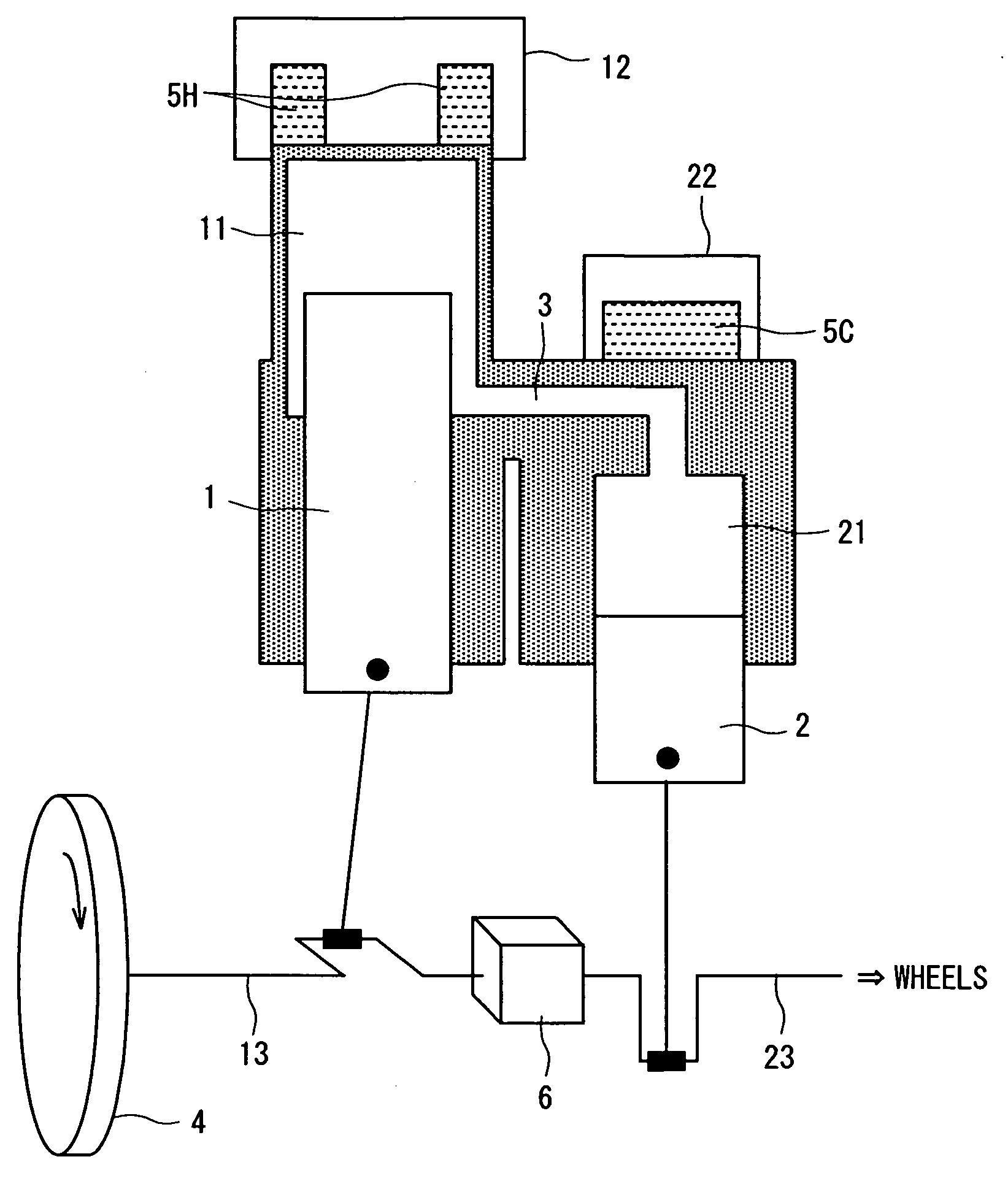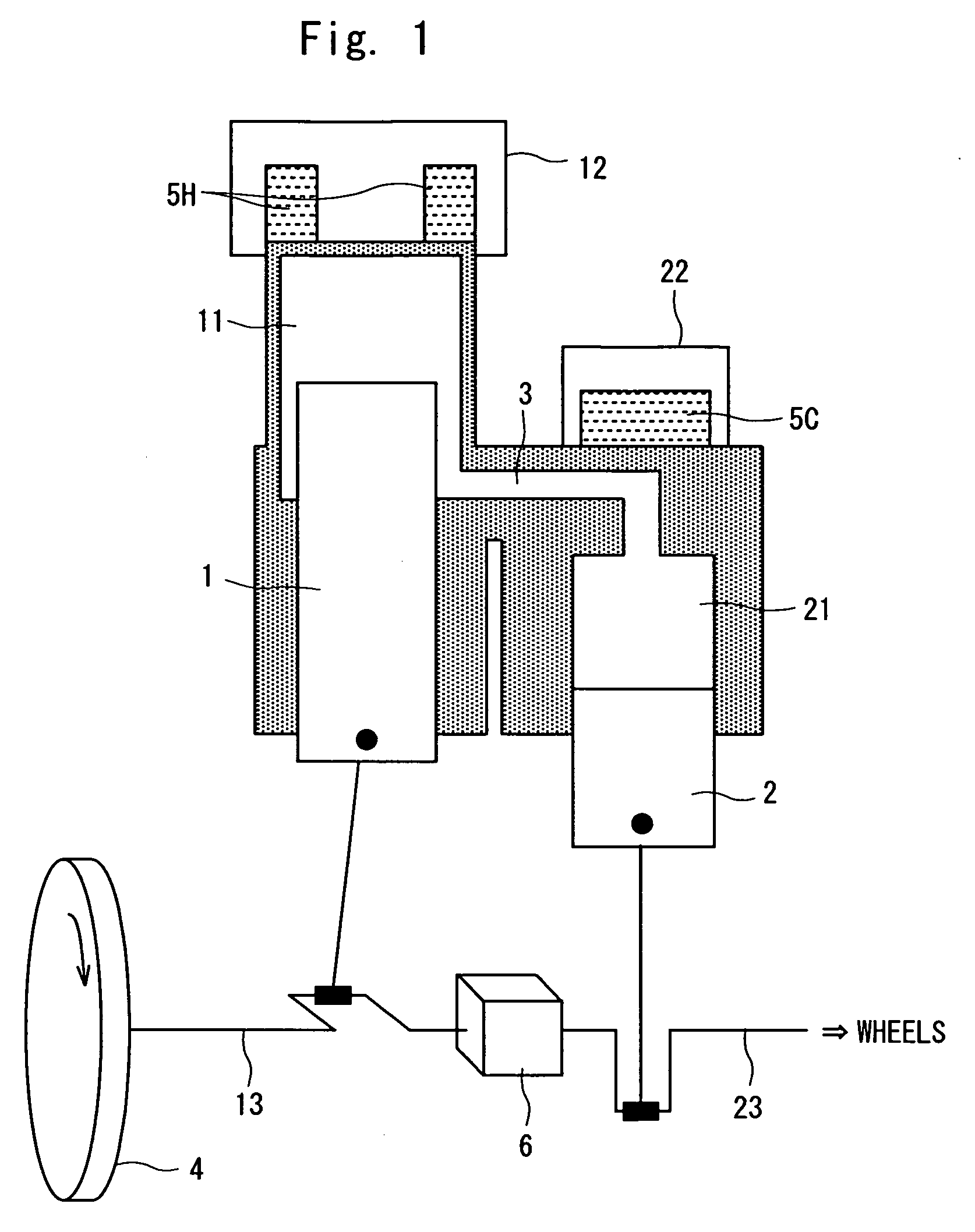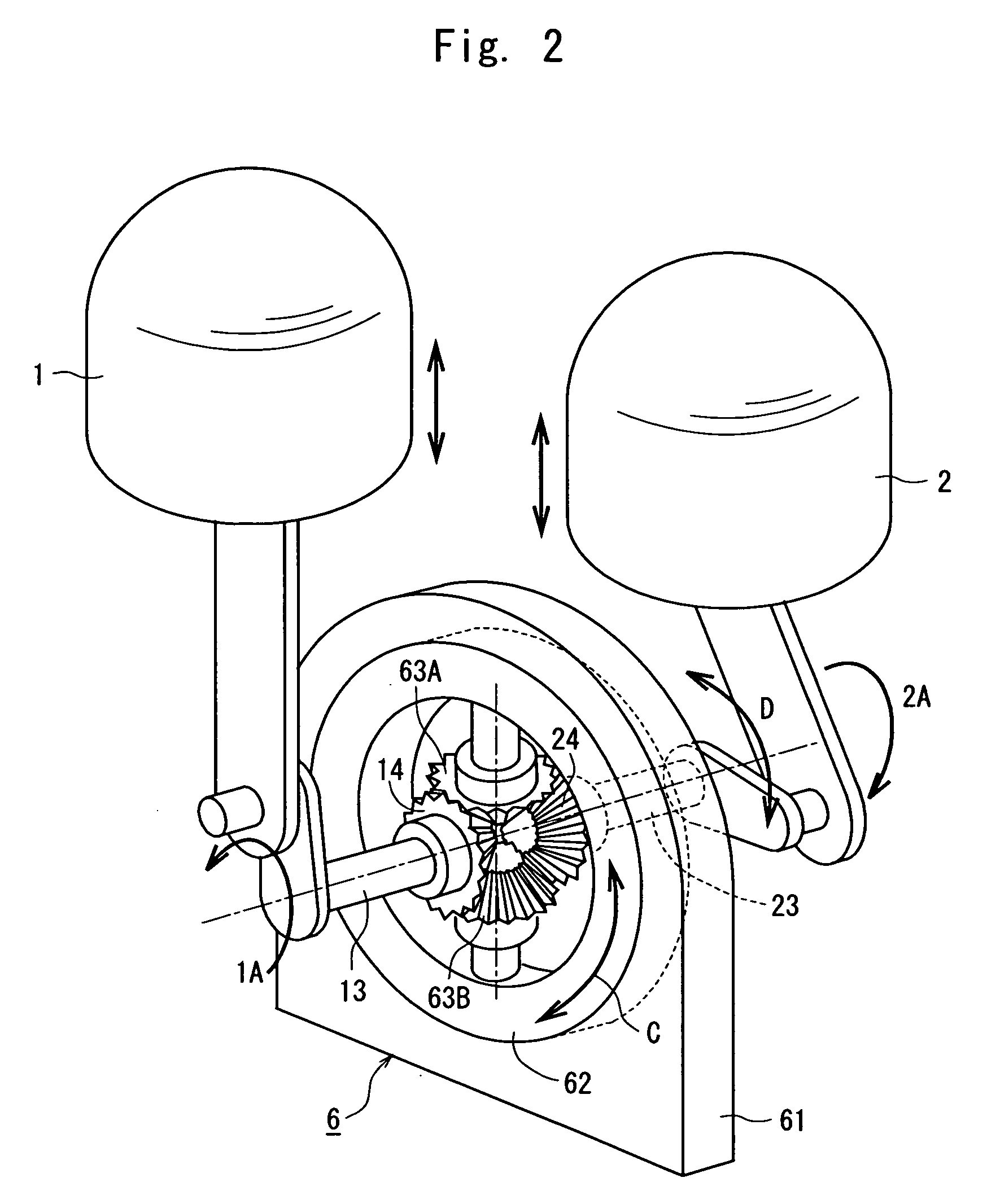Stirling Engine for Vehicles
a stirling engine and vehicle technology, applied in the field of stirling engines, can solve the problems of large driving power, rapid decrease rapid increase of temperature of operation fluid in the heating portion, so as to reduce vehicle speed, increase the temperature of the heat accumulator, and reduce the driving power
- Summary
- Abstract
- Description
- Claims
- Application Information
AI Technical Summary
Benefits of technology
Problems solved by technology
Method used
Image
Examples
Embodiment Construction
[0021]The Stirling engine of the invention will now be described with reference to the drawings. FIG. 1 is a schematic diagram illustrating a first embodiment of the Stirling engine of the invention and FIG. 2 is a view illustrating a phase difference-changing mechanism which is an operating condition-changing device of the Stirling engine of FIG. 1. Further, FIG. 3 is a schematic diagram of a control system for changing the operating condition of the Stirling engine of FIG. 1 and FIG. 4 is a graph illustrating a relationship between the output and the phase of the Stirling engine.
[0022]The Stirling engine of the embodiment of FIG. 1 is of the type of an engine equipped with two cylinder / piston mechanisms arranged in parallel, the piston 1 serving as a piston on the expansion side and the piston 2 serving as a piston of the compression side. The cylinder space in the upper part of the piston 1 is a heating space 11, and the cylinder space in the upper part of the piston 2 is a cooli...
PUM
 Login to View More
Login to View More Abstract
Description
Claims
Application Information
 Login to View More
Login to View More - R&D
- Intellectual Property
- Life Sciences
- Materials
- Tech Scout
- Unparalleled Data Quality
- Higher Quality Content
- 60% Fewer Hallucinations
Browse by: Latest US Patents, China's latest patents, Technical Efficacy Thesaurus, Application Domain, Technology Topic, Popular Technical Reports.
© 2025 PatSnap. All rights reserved.Legal|Privacy policy|Modern Slavery Act Transparency Statement|Sitemap|About US| Contact US: help@patsnap.com



